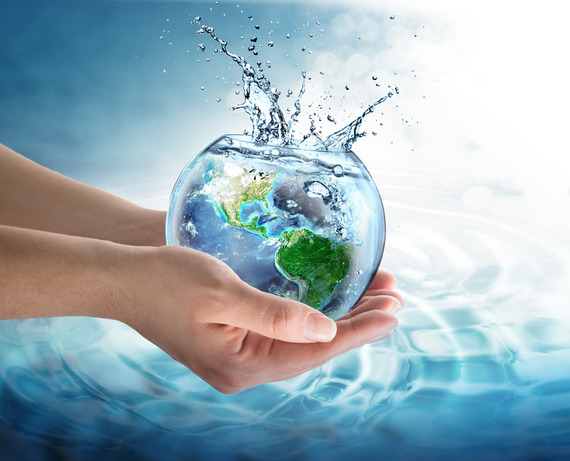When most businesses think about environmental sustainability practices, water conservation isn't always top of mind. But it should be. From the drought in California to water quality concerns in major cities like Flint, Michigan, water conservation is not just a business imperative- it's a global issue. Water is a limited resource. While 70 percent of the earth's surface is water, only 2.5 percent of this water is fresh water. An even small percentage is suitable for drinking, reports the Water Project. Water is a scarce resource we take for granted every day. If we continue down this same path, scientists predict worldwide water shortages will become increasingly prevalent.
- Start with a water audit. Many companies that use a significant amount of water underestimate just how much water they are using. A commercial water audit will assess how much water your business is using each day and identify conservation opportunities. Audits can also uncover costly leaks where inexpensive repairs could help stop unnecessary water loss and save your business money. Talk to your utility company about what water audit options it provides. Depending on your utility provider, you may even qualify for a free water audit or receive rebates for instituting water-saving initiatives, reports Small Biz Trends.
- Educated and empower employees. No one wastes water intentionally, but without conservation education, it can be difficult for your staff to know what they're doing wrong. Engage employees in a workplace initiative for conscientious water use and management. Start a workplace challenge, publish updates on your company blog or internal newsletter, and encourage the entire team to get involved.
- Know your state's status. Be informed about the major water issues facing your state and community. While California's water crisis is well known (as is general water scarcity throughout the Western states), did you know that every state in the country faces their own water challenges? This interactive water quality map from Pelican Water aggregates the most significant water issues facing our nation on a state-by-state basis. Texas, for example, faces water quality problems due to contamination from chlorine byproducts, TTHMs, and mercury. In Arizona, arsenic and lead contamination are exacerbating groundwater depletion problems. Know the issues facing your state and what your business can do to protect employees better from contamination concerns with drinking filters.
- Go low-flow. Contact your building management team and request they install low-flow restrictors. For example, the difference between older toilets and new, low-flow toilets is pretty significant. Older toilets use as much as 5 gallons to flush compared with low-flow toilets that only use 1.6 gallons. Don't stop at the toilets! Low-flow faucet aerators can cut water flow down from 2.2 gallons per minute to 1.5 gallons. Pre-rinse spray valves cut water usage down from 4 gallons to 1.5 gallons. Let you building management know that going low-flow is a priority for your business!
- Re-think landscaping. I live in Texas, a state notorious for scorching summers with limited rainfall. One trend I've noticed among local businesses is a push towards sustainable landscaping. That means choosing drought-hardy plants, like succulents and cacti, rather than bushes or shrubbery that requires significant water to flourish. Another option: eliminating grass. Consider replacing your grass with pebble and stone steps. Not only will you significantly reduce landscape water needs, but you will also save a bundle on upkeep costs. Just think, no more mowing, weeding, or fertilizing either! Plus, drought-tolerant landscaping sends an important message to your customers and clients that you value environmental sustainability.
Much of the water that's wasted by small businesses is "lost" through inefficiencies in toilet/faucet usage in the restroom, landscaping, air conditioning and cooling, cleaning/washing down floors and equipment, reports NASA. Generating a profit and conserving resources are not mutually exclusive business goals. Small changes - like opting for low-flow toilets - not only save money but also protect the environment and our scarce water resources for future generations.
